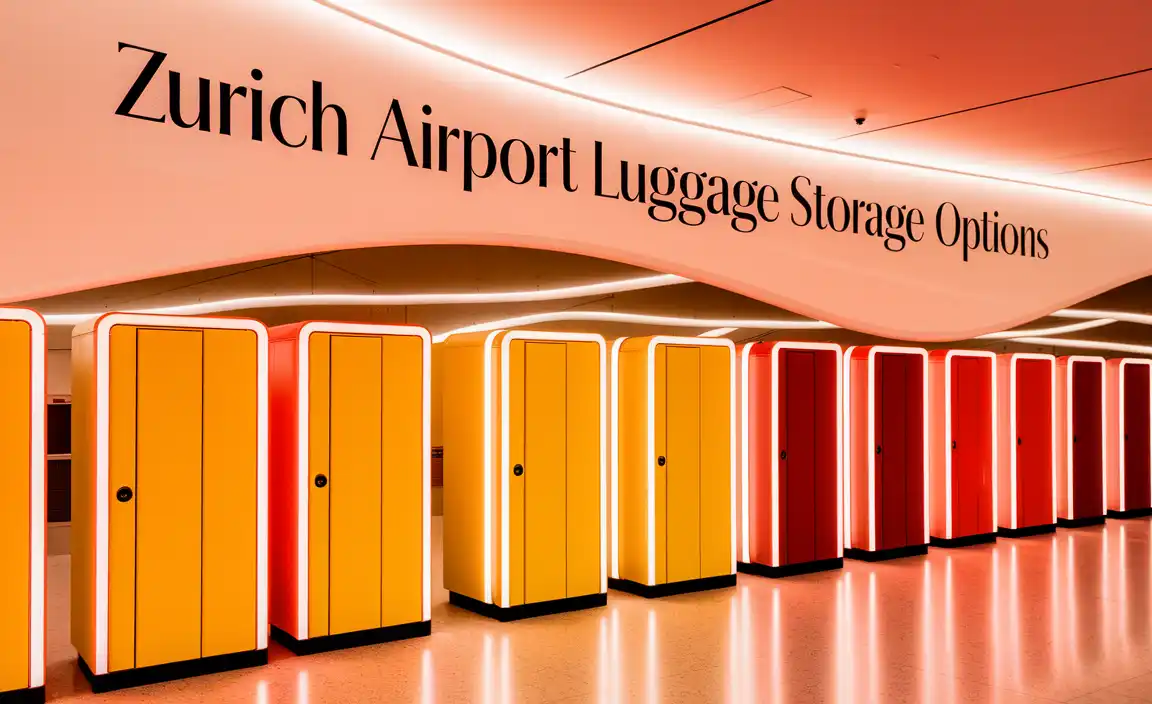Austria solo female travel tips are crucial for a safe, enjoyable, and memorable trip. This guide ensures confidence with practical advice on staying safe, navigating transportation, managing finances, and experiencing Austria’s beauty as a solo female traveler.
Exploring Austria alone as a woman is an incredible adventure waiting to happen. From the majestic Alps to the charming imperial cities, Austria offers a rich tapestry of experiences. However, navigating a new country by yourself can sometimes feel a little daunting. That’s perfectly normal! This guide is here to equip you with all the essential tips you need to feel prepared, safe, and empowered. We’ll cover everything from pre-trip planning to enjoying every moment on the ground, ensuring your solo journey through Austria is seamless and unforgettable. Get ready to discover how simple and rewarding solo travel in Austria can be!
Why Austria is a Fantastic Destination for Solo Female Travelers
Austria consistently ranks high on safety indexes, making it a naturally welcoming destination for solo female travelers. The country boasts a low crime rate and a generally respectful culture. Its efficient public transportation system makes getting around easy and stress-free, even without a car. The stunning natural landscapes, from alpine meadows to crystal-clear lakes, offer ample opportunities for adventure and quiet reflection. Culturally, Austria boasts magnificent cities like Vienna, Salzburg, and Innsbruck, filled with history, art, music, and delicious cuisine. Whether you’re seeking outdoor thrills or historical immersion, Austria provides a safe and enriching backdrop for your solo exploration.
Pre-Trip Planning: Setting Yourself Up for Success
A little preparation goes a long way in ensuring a smooth and enjoyable solo trip. Think of it as laying the groundwork for an amazing experience.
1. Research and Itinerary Planning
While spontaneity is great, having a basic itinerary is key for solo travel. Research the cities or regions you want to visit. Consider travel times between destinations and book accommodations in advance, especially during peak season. Look into guided tours or walking tours as a great way to get acquainted with a new place and meet like-minded travelers.
2. Accommodation Wisely
Solo travelers often find hostels to be a fantastic option for meeting people. Many offer private rooms if you prefer more solitude. Look for hostels with good reviews, centrally located, and with women-only dorms if that makes you more comfortable. Hotels and guesthouses are also readily available. When booking, always check recent reviews, paying attention to comments about safety and location.
3. Essential Documents and Copies
Keep your passport, visa (if required), and any other identification documents safe. Make digital copies and store them securely online (like in a password-protected cloud service) and consider having physical copies separate from your originals. This is a lifesaver if your documents are lost or stolen.
4. Learn Basic German Phrases
While English is widely spoken in tourist areas, knowing a few basic German phrases can greatly enhance your experience and show respect for the local culture. Phrases like “Guten Tag” (Good day), “Danke” (Thank you), “Bitte” (Please), and “Sprechen Sie Englisch?” (Do you speak English?) are incredibly useful. This can also be helpful in situations where English speakers are less common.
5. Travel Insurance is Non-Negotiable
For any trip, especially solo travel, comprehensive travel insurance is vital. Ensure it covers medical emergencies, trip cancellations, and lost or stolen belongings. Check the policy details carefully to understand what is included and what isn’t. The Austrian tourism board also recommends ensuring you have adequate coverage but always check with your provider for the most up-to-date information for your specific needs.
Safety First: Staying Secure and Confident
Feeling safe is paramount for solo female travelers, and Austria is a great place to start. By taking sensible precautions, you can enjoy your trip with complete peace of mind.
1. Be Aware of Your Surroundings
This is a universal travel tip, but it’s worth repeating. Always stay aware of what’s happening around you, especially in crowded areas or at night. Trust your intuition; if a situation feels off, remove yourself from it. Avoid displaying expensive jewelry or large amounts of cash.
2. Secure Your Belongings
Use anti-theft bags or backpacks, especially when traveling on public transport or in busy tourist spots. Keep your valuables in a secure place within your accommodation, like a safe deposit box or a lockable suitcase. When out and about, keep your bag in front of you.
3. Share Your Itinerary
Let a trusted friend or family member back home know your general itinerary, including where you’ll be staying and when you expect to arrive at different locations. Check in with them periodically. This provides an extra layer of security.
4. Emergency Contacts and Numbers
Save important emergency numbers in your phone. The general European emergency number is 112. It’s also wise to have the contact information for your country’s embassy or consulate in Austria readily available.
Key Emergency Numbers in Austria:
- 112: General European Emergency Number
- 133: Police
- 144: Ambulance
- 122: Fire Brigade
5. Navigating Nightlife and Socializing
If you’re exploring Austria’s social scene, do so with caution. Be mindful of how much alcohol you consume. Never leave your drink unattended and be wary of accepting drinks from strangers. If you’re out late, arrange your transportation back to your accommodation beforehand.
6. When Using Public Transport
Austria’s public transport is generally very safe. However, it’s still wise to sit in well-lit carriages, especially at night. If you feel uncomfortable, don’t hesitate to move to another carriage.
Getting Around Austria: Seamless Transportation
Austria excels in its public transportation network, making it incredibly easy for solo travelers to explore without the need for a car.
1. Trains (ÖBB)
The Austrian Federal Railways (ÖBB) is incredibly efficient, clean, and punctual. Trains connect major cities and smaller towns seamlessly. Booking tickets in advance, especially for longer journeys, can sometimes secure better prices. Consider an Interrail or Eurail pass if you plan on extensive train travel across Austria and potentially other European countries.
2. Buses
For routes not covered by train or for reaching more remote areas, bus services are a good option. Companies like FlixBus operate across Austria and offer affordable travel. These can be comfortable and often provide Wi-Fi.
3. Public Transport within Cities
Most Austrian cities have excellent public transport systems, including trams, buses, and (in Vienna) a metro system (U-Bahn). Purchase day passes or multi-day tickets for convenience and cost savings. These are usually available at ticket machines, kiosks, or online.
4. Taxis and Ride-Sharing
Taxis are reliable in Austria, though they can be pricier than public transport. Ride-sharing services may be available in larger cities like Vienna. Always ensure you’re using official services to avoid scams.
5. Walking and Cycling
Many Austrian cities, especially those with historic centers, are very walkable. Cycling is also a popular way to get around, with many cities offering extensive bike paths and rental services. This is a wonderful way to experience the local atmosphere at your own pace.
Managing Your Money: Budgeting and Payments in Austria
Keeping your finances in order is part of stress-free solo travel. Austria uses the Euro (€).
1. Cash vs. Card
Credit and debit cards are widely accepted in Austria, especially in larger establishments like hotels, restaurants, and shops in cities. However, it’s always a good idea to carry some cash for smaller purchases, markets, or in more rural areas where card payment might be less common.
2. ATMs and Foreign Transaction Fees
ATMs (also known as “Bankomat” in Austria) are readily available. Inform your bank about your travel dates to avoid any issues with your cards being blocked. Be aware of potential foreign transaction fees charged by your bank and ATM withdrawal fees.
3. Budgeting for Your Trip
Austria can cater to various budgets. Accommodation is often the largest expense, followed by food and activities. Eating at local bakeries (Bäckerei) or markets can be more affordable than sit-down restaurants. Many attractions offer student or senior discounts, so inquire if they apply to you.
Here’s a general idea of daily costs (excluding flights and major purchases):
| Category | Budget Traveler (€/day) | Mid-Range Traveler (€/day) |
|---|---|---|
| Accommodation (Hostel/Budget Hotel) | 30-60 | 70-120 |
| Food (Groceries/Casual Eats) | 20-30 | 40-60 |
| Transportation (Local) | 5-10 | 10-20 |
| Activities/Sightseeing | 15-30 | 30-60 |
| Estimated Total | 70-130 | 150-260 |
Remember, these are estimates and can vary greatly depending on your travel style and the specific cities you visit. Vienna and Salzburg tend to be more expensive than smaller towns.
Staying Connected: Communication and Internet
Keeping in touch and accessing information is easier than ever.
1. SIM Cards and eSIMs
Consider purchasing a local Austrian SIM card or an eSIM for your phone upon arrival. This is usually more cost-effective than using international roaming. Providers like A1, Magenta, and Drei offer various data plans. Check if your phone is unlocked before you travel.
2. Wi-Fi Availability
Wi-Fi is commonly available in hotels, hostels, cafes, and many public spaces. Look for cafes advertising “WLAN” (Wi-Fi). It’s always a good idea to download offline maps and essential information using Wi-Fi whenever you can.
3. Useful Apps for Solo Travelers
- Google Translate: For understanding signs and menus, and basic communication.
- Google Maps/Citymapper: For navigation and public transport information.
- Booking.com/Hostelworld: For finding and booking accommodations.
- DB Navigator (for Germany/Austria) or ÖBB App: For train schedules and tickets.
- XE Currency Converter: To easily check exchange rates.
Packing Essentials for Austria: Comfort and Practicality
Packing smart means less hassle and more enjoyment. Focus on versatile items and layers.
1. Clothing
- Layers: Austria’s weather can be unpredictable. Pack layers such as t-shirts, long-sleeved tops, sweaters or fleeces, and a waterproof and windproof outer jacket.
- Comfortable Walking Shoes: You’ll be doing a lot of walking, so prioritize comfortable and broken-in shoes.
- Slightly Dressier Outfit: For evenings out or visiting more formal attractions.
- Scarf/Hat/Gloves: Especially if traveling outside of summer, these can make a huge difference.
2. Toiletries and Personal Care
While Austria has excellent pharmacies and drugstores, bring any specific personal care items you rely on. For those who require them, adult diapers or child diapers can be important for comfort and peace of mind during long travel days or flights. Having a supply of high-absorbency adult diapers or child diapers can prevent anxiety and ensure comfort, allowing you to focus on enjoying your trip without worry. Most major pharmacies and some supermarkets carry such products, but having a personal stash for immediate needs is always a good idea.
3. Medications
Bring any prescription medications in their original packaging with a copy of your prescription. Also, pack a small first-aid kit with basics like pain relievers, band-aids, antiseptic wipes, and any personal necessities.
4. Electronics
- Universal travel adapter (Austria uses Type F plugs).
- Portable power bank.
- Phone and charger.
- Camera (optional).
5. Documents and Money
As mentioned before: passport, any visas, copies of important documents, credit/debit cards, and some cash.
Embracing the Culture and Cuisine
Austria’s culture is rich and its food is delicious! Dive in and enjoy.
1. Must-Try Foods and Drinks
- Wiener Schnitzel: The classic breaded veal cutlet.
- Sachertorte: A famous chocolate cake, a Viennese specialty.
- Apfelstrudel: Warm apple strudel, often served with vanilla sauce or ice cream.
- Käsespätzle: A comforting dish of pasta with cheese and onions.
- Austrian Wine: Particularly Grüner Veltliner.
- Melange: Vienna’s version of cappuccino.
2. Etiquette and Customs
It is polite to greet shopkeepers and servers with “Guten Tag” or “Grüß Gott” (common in western Austria). Tipping is customary but not as high as in some other countries; rounding up the bill or leaving 5-10% for good service is appreciated.
3. Engaging with Locals
Austrians can sometimes seem reserved, but they are generally friendly and helpful. A simple “Bitte” and “Danke” go a long way. Be patient and polite, and you’ll find interactions very pleasant.
Top Destinations for Solo Female Travelers in Austria
Austria offers a diverse range of experiences, from imperial cities to breathtaking natural landscapes.
1. Vienna
The grand capital offers imperial palaces, world-class museums, vibrant coffee house culture, and classical music. It’s a city that can be easily explored solo, with excellent public transport and a safe atmosphere.
2. Salzburg
The birthplace of Mozart and setting for “The Sound of Music,” Salzburg charms with its baroque architecture, fortress, and stunning mountain backdrop. It’s compact and very walkable.
3. Innsbruck
Nestled in the heart of the Alps, Innsbruck is perfect for outdoor enthusiasts. You can combine city exploration with easy access to hiking and winter sports. The Golden Roof is a must-see.
For those interested in the natural beauty, towns around the Salzkammergut lake district, like Hallstatt or St. Wolfgang, offer picturesque views and opportunities for gentle hikes or boat trips. These smaller towns offer a slower pace and a chance to connect with nature.
FAQ: Your Austria Solo Female Travel Questions Answered
Q1: Is Austria safe for solo female travelers?
A: Yes, Austria is considered one of the safest countries in the world for solo female travelers due to its very low crime rates and well-maintained infrastructure.
Q2: What is the best way to get around Austria as a solo traveler?
A: Austria has an excellent public transportation system. Trains (ÖBB) are efficient for inter-city travel, and trams, buses, and metros are great for getting around within cities. Purchasing day passes or multi-day tickets is often economical.
Q3: Can I get by in Austria without speaking German?
A: In major tourist areas, hotels, and larger cities, English is widely spoken. However, knowing a few basic German phrases is polite and can be helpful in smaller towns or less touristy establishments.
Q4: What kind of accommodation is best for solo female travelers in Austria?
A: Hostels with private rooms or women-only dorms are great for meeting people and staying on budget. Boutique hotels and well-located guesthouses are also excellent options, offering comfort and security.
Q5: How much money should I budget for a solo trip to Austria?
A: A rough budget can range from €70-€130 per day for a budget traveler to €150-€260 per day for a mid-range traveler, excluding flights and major expenses. This can vary significantly based on your travel style and chosen cities.
Q6: Should I carry cash or use credit cards in Austria?
A: Both are recommended. Credit cards are widely accepted in cities for larger purchases. However, it’s wise to carry some cash for smaller vendors, markets, or in rural areas.



